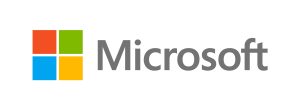Artificial Intelligence (AI) is opening doors to new ways of improving federal health care, including through advancements in personalized and preventative care, diagnosis and treatments, new discoveries, and detection of claims fraud and misuse. However, to truly realize their healthcare potential, AI systems must be developed responsibly and in ways that warrant people’s trust. Here are real-world examples of how AI can drive better federal health outcomes.
Care Delivery
Health agencies can use individuals’ care outcomes to inform population health programs, such as recommending preventive measures or screenings. Predictive care guidance uses analytical solutions, built with AI, to search large amounts of patient and population data to find hidden patterns and trends.
For example, New York City’s Mount Sinai Health System used predictive AI to identify patients at risk of falling based on data about previous falls, and that decreased patient risk.
Biomedical Research
Biomedical researchers are using AI to sort and interpret complex genomic data to improve patient outcomes and share clinical trial and disease treatment information. Researchers at The Jackson Laboratory developed an AI tool that helps find the most relevant cancer-related information from the roughly 4,000 biomedical research papers published daily. This is a type of precision medicine that “will enable researchers to more efficiently discover the specific genomic mutations that drive cancer,” says Rebecca Crowe, Microsoft’s Director of Federal Health.
Data Interoperability and Insights
Collaboration is critical to population health, and data can ensure that everyone is on the same page — if it’s the right data, shared effectively and securely. During the pandemic, the Department of Veterans Affairs used a cloud-based dashboard to help manage and track active cases among veterans and the availability of hospital beds. This dashboard provided America’s largest integrated healthcare system with near real- time information, giving VA leaders a common picture to inform decision-making. AI can go further — providing data-driven insights from the vast amounts of unstructured data pervasive in health care. “The truth, more often than not, can be found in the data,” Crowe said.
Eligibility and Benefits Determination
Every year, the Social Security Administration processes 3 million to 4 million disability claims and requests approximately 15 million medical records to support those claims, but a 25-year staffing low has led to a major backlog. AI can speed benefit determinations and augment staff needed to make decisions. “Make sure responsible AI is built in, we have that health equity overlay and that every decision is explainable with ultimate approval by a government employee,” said Jude Soundar, Federal Health Director for Microsoft U.S. Government Affairs.
How Microsoft Federal Helps
While AI is powerful technology that can improve health care in many ways, organizations must navigate a secure and responsible path through ethics, governance, data protection and security. From cloud solutions for storage and scaling compute to high-performance computing and AI capabilities, Microsoft has tried-and-true solutions, all based on the company’s commitment to responsible, secure AI through its own and federal standards. Visit Microsoft Cloud for Healthcare to learn more.
This article appears in our guide “Conversations With CXOs: Lessons Learned in Management, Workforce and Technology.” For more insights from the C-suite, download it here:






Leave a Reply
You must be logged in to post a comment.